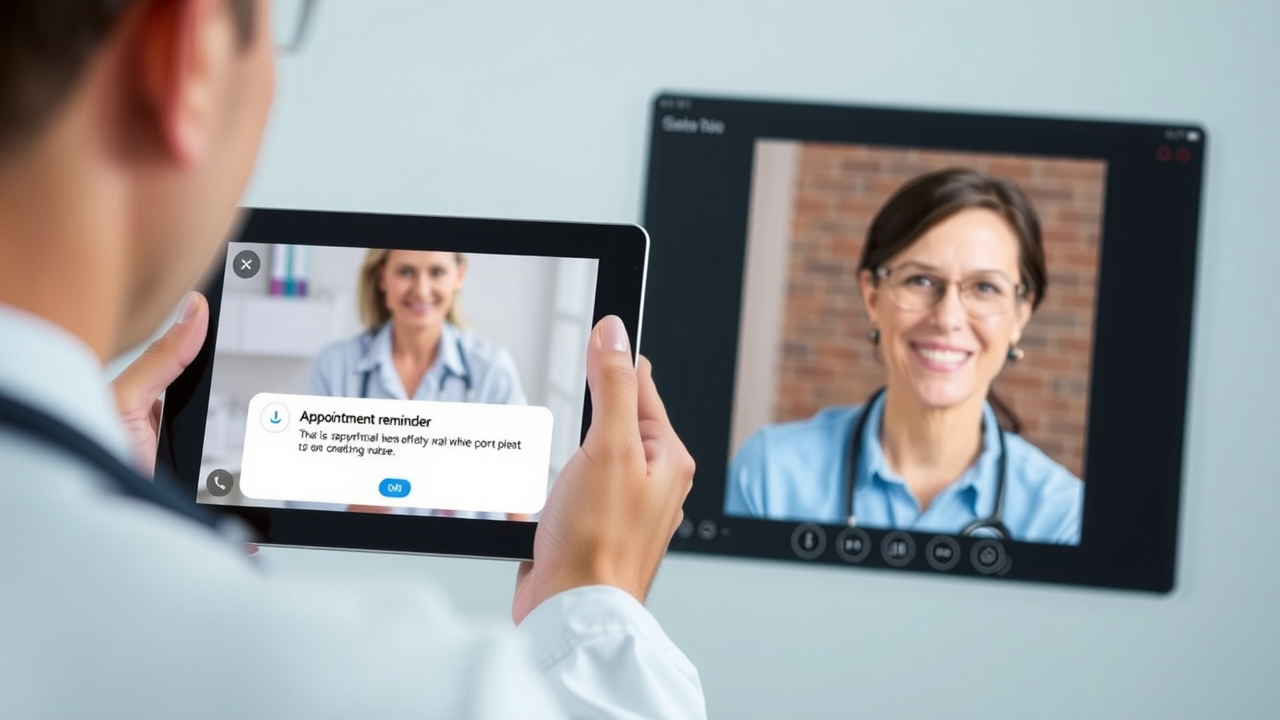Telehealth has changed how people access healthcare. Instead of waiting in crowded clinics, patients can now consult their doctors from the comfort of their homes. But even with all the convenience, some patients still feel hesitant about virtual care. They worry about impersonal experiences, lack of connection, or not fully understanding their condition.
This is where digital marketing and engaging content play an important role. By using blogs, social media, video consultations, and other digital tools, medical practices can make telehealth more personal, accessible, and patient-friendly.
In this article, we’ll explore how telehealth and digital marketing work together to build trust, educate patients, and create meaningful doctor-patient relationships online.
The Rise of Telehealth in Modern Healthcare
Telehealth is no longer a futuristic idea—it’s here, and it’s growing fast. The convenience of virtual healthcare has made it a preferred choice for many patients, especially those who:
- Live in remote areas with limited access to doctors
- Have mobility issues or chronic conditions
- Need quick consultations for minor health concerns
- Prefer avoiding long wait times at clinics
Even though telehealth offers clear benefits, some patients are still skeptical.

They might wonder:
- Will I get the same level of care as an in-person visit?
- How do I know if my condition requires an in-person checkup?
- Is my personal health information safe online?
This is where content marketing comes in. Medical practices can use informative and engaging content to educate patients about telehealth, address concerns, and make virtual visits feel more comfortable and trustworthy.
Importance of Digital Marketing in Telehealth
Digital marketing helps connect doctors and patients beyond the video screen. It’s not just about advertising—it’s about building relationships and making healthcare more accessible. Here’s why it matters:
1. Educating Patients About Telehealth
Many patients are new to virtual healthcare. They may not know how it works, what to expect, or how to prepare for an online appointment. Through blogs, FAQs, and social media posts, medical practices can answer common questions like:
- “How do I book a telehealth appointment?”
- “What technology do I need for a video consultation?”
- “What conditions can be treated through telehealth?”
By providing clear and easy-to-understand information, healthcare providers can reduce patient hesitation and increase confidence in virtual care.

2. Building Trust Through Doctor-Patient Engagement
One major concern with telehealth is the lack of personal connection. Patients may feel that virtual consultations are too clinical or impersonal. Digital marketing bridges this gap by allowing doctors to engage with patients before, during, and after appointments.
For example:
- Video content: Short videos introducing doctors can make them feel more approachable.
- Live Q&A sessions: Hosting live sessions on social media allows doctors to answer common patient concerns.
- Patient testimonials: Sharing real success stories builds trust and reassures potential patients.
3. Expanding Telehealth Reach with SEO and Social Media
If patients don’t know about telehealth services, they won’t use them. SEO (Search Engine Optimization) helps healthcare providers rank higher on Google when patients search for terms like:
- “Online doctor consultation near me”
- “Best telehealth services for mental health”
- “How to do a virtual doctor visit”
At the same time, social media helps spread awareness.

Platforms like Facebook, Instagram, and LinkedIn allow practices to share educational posts, patient testimonials, and appointment reminders—keeping telehealth top-of-mind for potential patients.
Key Strategies for Marketing Telehealth Services
Now that we understand why digital marketing is essential for telehealth, let’s explore some effective strategies that make virtual healthcare feel more personal and accessible.
1. Engaging Blog Content for Patient Education
A well-written blog can educate, inform, and reassure patients about telehealth. Topics can include:
- “What to Expect During Your First Telehealth Visit”
- “Telehealth vs. In-Person Care: Which One is Right for You?”
- “How to Prepare for a Video Consultation with Your Doctor”
By answering patient questions and addressing concerns upfront, healthcare providers can build trust and encourage more people to try virtual visits.
2. Video Content to Humanize Telehealth
Videos are a powerful tool for making telehealth more personal.

Patients feel more comfortable when they see and hear from their doctor before a consultation. Medical practices can use video marketing in different ways:
- Doctor introductions: Short clips where doctors introduce themselves and explain their specialties.
- Explainer videos: Simple animations or real doctors explaining how telehealth works.
- Behind-the-scenes tours: Giving a virtual tour of the telehealth process to make it feel less intimidating.
3. Email Marketing for Patient Engagement
Emails help keep patients informed and engaged with telehealth services. Practices can send:
- Appointment reminders
- Telehealth guides and preparation checklists
- Follow-up emails with post-consultation advice
- Monthly newsletters with health tips and updates
This kind of personalized communication keeps patients connected with their doctor even outside appointments.
4. Leveraging Social Media for Awareness and Interaction
Social media is an excellent way to promote telehealth and engage with potential patients.

Strategies include:
- Live Q&A sessions: Doctors answering patient questions about virtual care in real time.
- Patient success stories: Testimonials from satisfied telehealth patients.
- Polls and quizzes: Fun interactive posts to educate followers on telehealth.
The more engaging the content, the more likely patients will feel comfortable and connected with their healthcare provider.
Making Telehealth Personal and Accessible Through Content
Telehealth is here to stay, but its success depends on how well patients connect with it. Digital marketing plays a huge role in making virtual healthcare feel personal, accessible, and patient-friendly.
By using blogs, videos, emails, and social media, medical practices can:
✔ Educate patients about telehealth
✔ Build trust and engagement
✔ Expand their reach through SEO and social media
✔ Keep patients connected beyond their appointments
Instead of viewing telehealth as a cold, impersonal experience, content marketing turns it into a relationship-driven service that helps patients feel supported and cared for—even from a distance.

For medical practices looking to increase patient trust in telehealth, the key is simple: use engaging content to bridge the gap between virtual care and real human connection.
 Add Row
Add Row  Add
Add 




Write A Comment